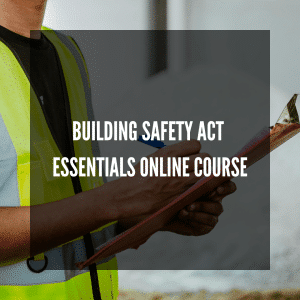Updated: 07/07/2023
In the world of construction, where innovation, progress, and development happen at a phenomenal pace, a single misstep can spell disaster. The safety of the workers involved, the integrity of the project, and the welfare of the public are of utmost importance.
At the heart of these concerns is the Construction (Design and Management) Regulations – the CDM Regulations, which play a crucial role in maintaining safe and efficient practices in the construction industry.
Unlike the 2007 version, these regulations apply to everyone in the construction industry, from small companies to large ones. In this blog, we explain what the CDM Regulations 2015 are, their purpose, history and more.
What is the Meaning of CDM?
Construction (Design and Management) Regulations, often called CDM Regulations for short, are a set of health and safety regulations that apply to construction projects in the United Kingdom. Compliance with the regulations is a legal requirement.
When were the CDM Regulations Introduced?
The Construction (Design and Management) Regulations, or CDM, have been integral to UK construction safety practices since their inception in 1994, in alignment with European Directive 92/57/EEC. Over the years, these regulations have been revised multiple times to better suit the changing dynamics of the construction industry, resulting in substantial shifts in compliance requirements.
In 2007, the original 1994 regulations underwent significant modification, leading to a more comprehensive regulatory framework. This was further revised in 2015, introducing the current version of the CDM regulations, referred to as CDM 2015, effective from April 6 of that year. This iteration of the regulations presented substantial changes from its predecessor, most notably in its expanded definition of construction.
Today, the reach of CDM 2015 extends to projects of all scales, from minor home improvements to large-scale commercial construction. Consequently, the mandate for compliance covers a broad spectrum of activities within the construction sector. Hence, CDM 2015 now sets the standards for planning and managing construction projects of all kinds across the UK, further solidifying its importance in promoting safe and effective industry practices.
What are CDM Regulations 2015 & What is their Purpose?
The primary objective of these regulations is to improve health and safety in the industry by helping construction projects to be carried out in a way that eliminates or reduces potential risks.
These regulations apply to all construction work, including new buildings, demolition, refurbishment, extensions, conversions, repair and maintenance. They define legal duties for everyone involved in the construction process to manage the health, safety and welfare of construction workers.
The regulations cover a wide range of roles and responsibilities, including those of clients, designers, principal designers, principal contractors, contractors and workers. The regulations detail what each duty holder must do to comply with the law and ensure projects are carried out safely.
Some examples of how the CDM regulations can guide roles in the construction sector include:
- Cooperate and coordinate your work with others in your team
- Know and understand the risks associated with construction and how they are managed on your site
- Engage with workers and effectively communicate about the risks and how they are being managed
- Plan projects with all the risks being managed from start to finish
- Delegate roles and responsibilities effectively
Since these regulations are legally binding and enforceable by criminal law, it is crucial for everyone involved in a construction project to be aware of and follow them.
What are the 5 Main Parts of CDM?
The construction (design and management) regulations 2015 are divided into five parts. Between these five sections, there are 39 regulations in total. These go through everything from designers’ duties to fire detection and fire fighting. Everything that could pose a security risk at some point, from planning to completion, is included in these regulations.
Part 1: Commencement, Interpretation and Application
This part details the scope and definitions of the regulations, including the types of work and projects they apply to and exceptions.
Part 2: Client Duties
Part two outlines the responsibilities of the client, which include ensuring the project is suitably managed, providing pre-construction information, and making sure the principal designer and principal contractor carry out their duties.
Part 3: Health & Safety Duties and Roles
This part further divides into two sections. One details the general duties that apply to all construction projects, such as the duty to avoid risks, combat risks at source, and provide instruction and training. The second section outlines the additional duties that apply to projects involving more than one contractor, including the roles and responsibilities of the principal designer and principal contractor.
Part 4: General Requirements for All Construction Sites
The second last part provides the rules and guidelines that apply to all construction sites, regardless of the type of project. These include stability of structures, demolition, explosives, electricity, fire, working at height, welfare facilities and more.
Part 5: General
Finally, the fifth part of the CDM regulations deals with the arrangements for projects that started before the 2015 regulations came into effect but were completed after the implementation date. It also details the rules that the 2015 CDM Regulations replaced.
Tip: Browse through our CDM Compliance Kits to find the perfect option to prepare yourself or your team for these regulations. If you are a contractor, you may find our CHAS Accreditation Course even more beneficial.
CDM Requirements & Compliance
There are three key phases with specific CDM requirements, pre-construction, construction and post-construction.
- Pre-construction phase: The project must be notified to the Health and Safety Executive (HSE). Duty holders need to be appointed, and a construction phase plan should be prepared. Relevant information about the site, design, and materials must be obtained.
- Construction phase: Health and safety coordination is crucial. Adequate welfare facilities should be available, and workers should receive proper site inductions. Risks must be assessed and managed with regular site monitoring and inspections.
- Post-construction phase: A health and safety file is required, outlining the risks remaining and how they should be managed. The handover process should be smooth, and the client is responsible for the ongoing maintenance and management of health and safety.
Understanding the Scope & Purpose of CDM Regulations 2015
In conclusion, the CDM Regulations 2015 serve as a cornerstone for ensuring safety and efficiency in the rapidly evolving world of construction. With a history dating back to 1994, these regulations have continuously adapted to keep pace with the changing dynamics of the industry, resulting in the comprehensive CDM 2015 version that is now in effect.
By encompassing a wide range of roles and responsibilities, the CDM Regulations establish a clear framework for all parties involved in construction projects to fulfil their legal duties and actively manage workers’ health, safety, and welfare.
With its broad applicability covering projects of all scales and types, the CDM 2015 regulations have solidified their significance as the UK’s standard for construction project planning and management. By embracing the principles outlined in the CDM Regulations, the construction industry can continue to progress and innovate while prioritising safety as an integral part of its operations.









